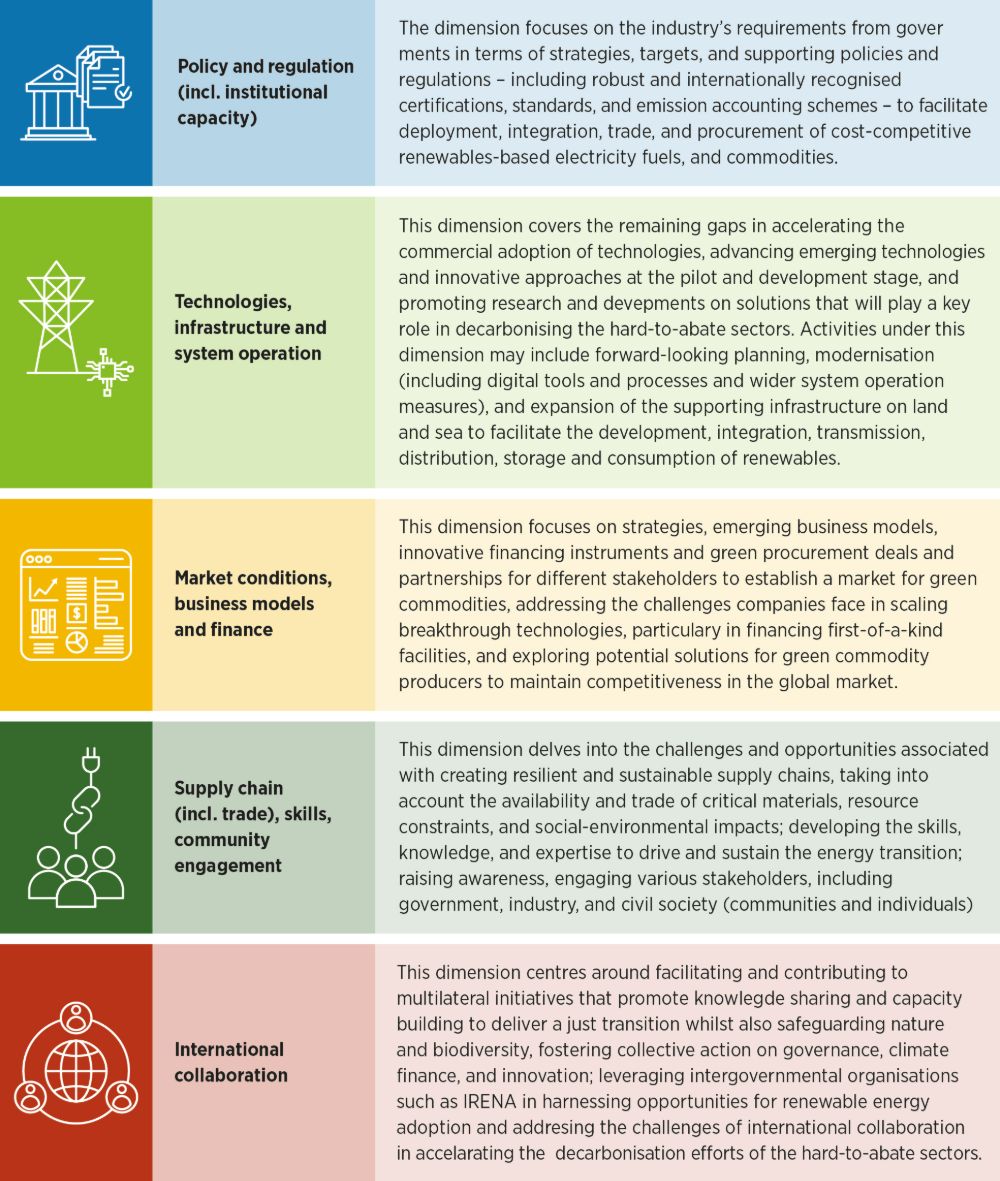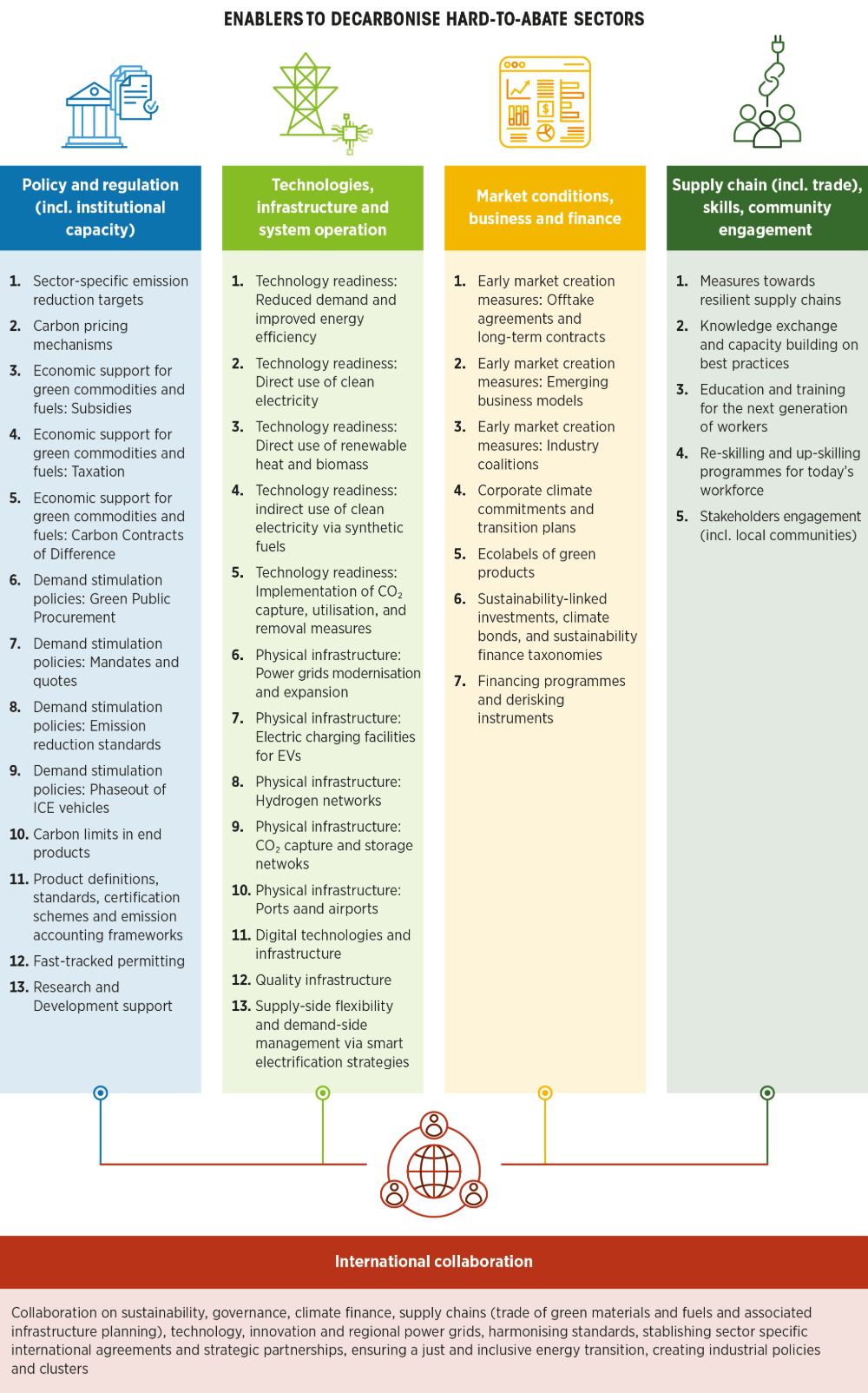1.3 An enabling framework to decarbonise the hard-to-abate sectors with renewables
To fully transition these hard-to-abate sectors in the next three decades, countries will need to deploy innovative solutions. Technology development is necessary, but insufficient on its own, to advance the decarbonisation of these sectors. Systemic innovation – innovation beyond technology – is needed, including holistic enablers in the areas of policy and regulation, physical and digital infrastructure, new market designs, business models, finance, supply chains, skills and capacity building, stakeholder engagement, and international collaboration. Figure 3 groups these innovations into five key enabling dimensions for the energy transition in the hard-to-abate sectors.
Figure 3: Key enabling dimensions of the energy transition

To translate these dimensions into actionable insights, the mapping in Figure 4 organises the necessary actions and initiatives into “enablers”. This taxonomy serves as a structured guide, categorising and clarifying the diverse approaches required to fulfil sector-specific needs effectively. While the first four groups of enablers detail the specific actions, instruments, mechanisms or strategies required to facilitate sector transitions, the last one – International Collaboration – is cross-cutting and highlights opportunities for countries and regions to co-operate on these enabling activities.
Within the Policy and Regulation dimension, for example, enablers encompass carbon pricing as well as demand stimulation policies and regulatory frameworks. Similarly, under Technologies, Infrastructure and System Operation, the emphasis is placed not solely on individual technological solutions but on the infrastructural enablers necessary to accelerate deployment. By identifying and setting forth precise enablers, the mapping facilitates targeted planning, fosters coherent policy making, and supports collaborative efforts among stakeholders. This structured methodology can help ensure that all essential aspects for thorough decarbonisation in hard-to-abate sectors are addressed comprehensively.
Figure 4: Mapping of enablers, within the enabling dimensions, to decarbonise hard-to-abate sectors
